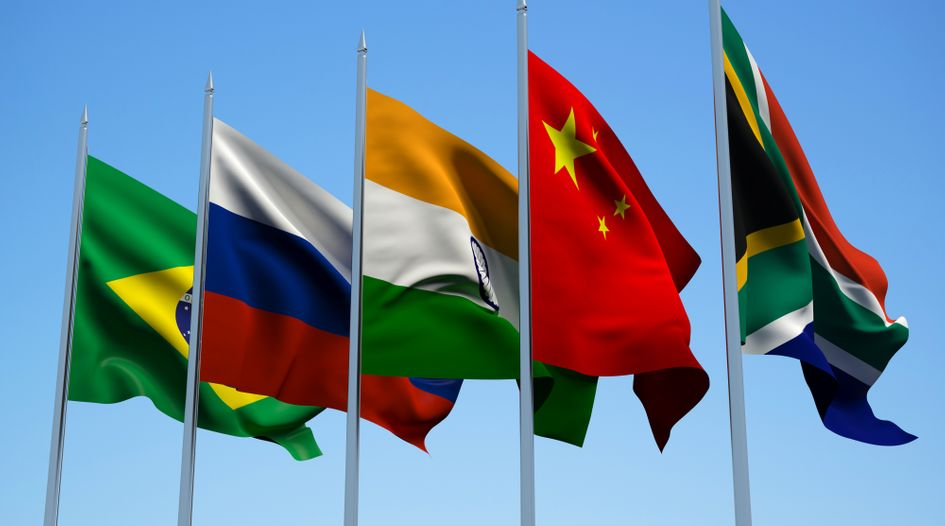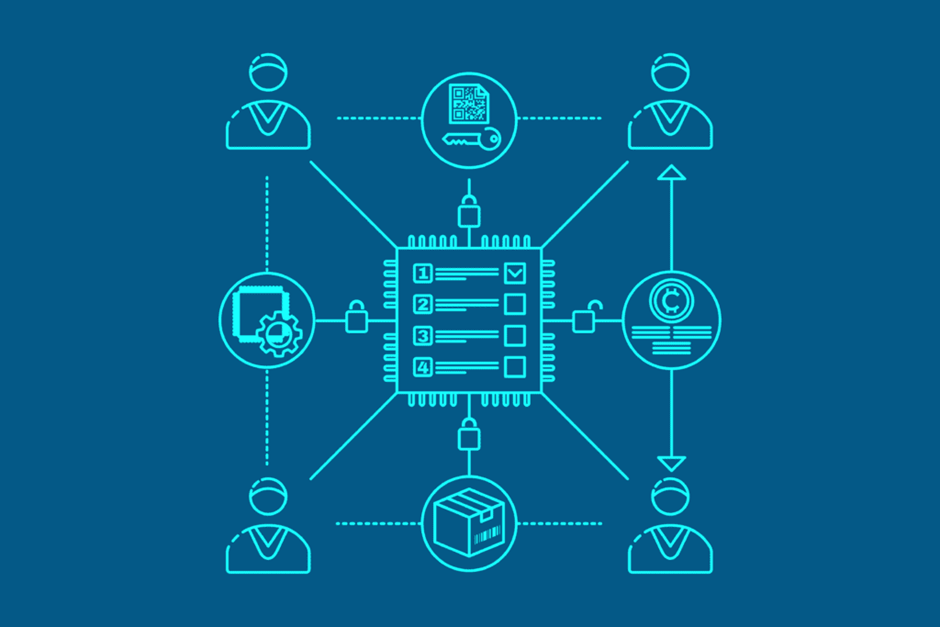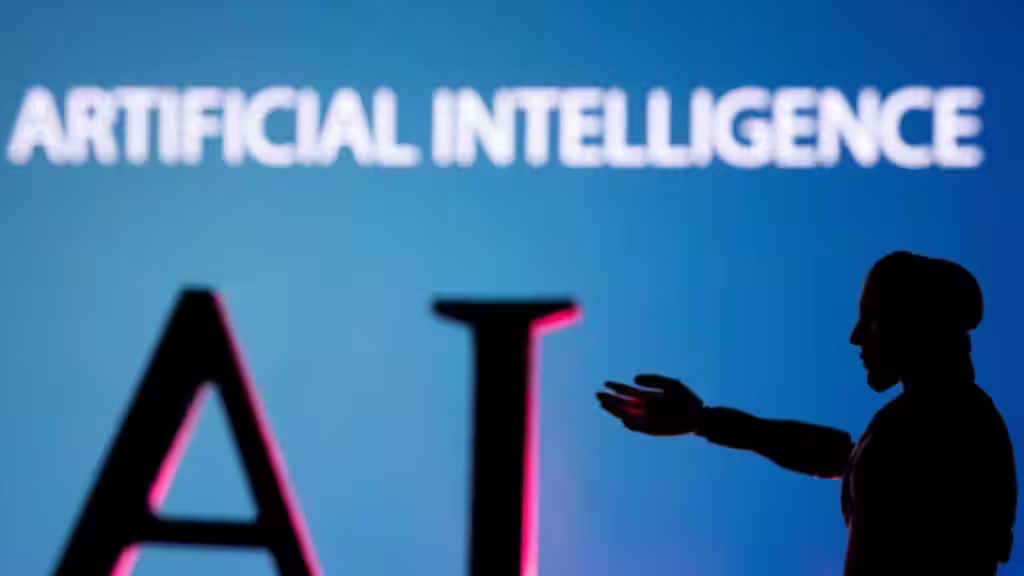
Access to Welfare in the Digital Economy in BRICS Countries
Digital Economy Blog Series: Part 5
Introduction
Welfare states, where they still exist, have rapidly become targeted welfare states, preoccupied with the need to exclude persons deemed ineligible for certain welfare measures. Means testing is one way of fine-tuning targeting, i.e., including and excluding people from a beneficiary status based on desired characteristics. Various studies have shown that means testing can end up creating inefficiencies rather than reducing them, create stigma over accessing welfare, and can also be less effective overall.
Many governments now use digital technology for means testing. For instance, the US uses an Income Eligibility Verification System that links several databases to verify beneficiary income. It also uses a Prisoner Verification System linked to prisoners’ databases to exclude prisoners from benefits. In Sweden, municipal personal social services use Robot Process Automation to make some decisions about eligibility.
Automated means testing and other automation of welfare have been on the rise in BRICS countries, helmed in particular by digital identity systems. The following paragraphs take a look at each BRICS country’s digital ID system and its relation to welfare.
Brazil
A network of laws and decrees establishes the digital ID system of Brazil. Law 13,444 of 2017 provides for the establishment of the National Civil Identification (ICN). Brazil’s Digital Government Strategy 2020-22 has among its goals the provision of a digital ID to the majority of citizens by 2022. Accordingly, a 2021 Decree describes the Citizen Identification Service for the ICN. This Decree also makes the Citizen Identification Service mandatory for “processes of provision of public services”. A 2022 Decree gives the existing identity card a digital form with new specifications. This ID involves the collection of biometric data, including facial biometrics and fingerprint impressions, and contains a QR code. The digital ID also contains a unique number, which is the CPF or the number associated with a citizen’s record in the national taxpayer registry. The inclusion of the CPF number has extinguished the use of a separate unique number for the digital ID. While the 2022 Decree states that the digital ID must be in consonance with the country’s data protection laws, an independent report shows that a data protection impact assessment was not conducted as required given the project’s centralisation of large amounts of personal data.
Presently, the ICN is used primarily on the gov.br platform for access to public services. One cannot log in to the gov.br platform without a CPF number, which is to be linked to the ICN, to access any digitised public service. These services include municipal services, accessing a digital driver’s licence, work cards, vaccination certificates, unemployment insurance, information about university admissions, etc. In June 2022, the platform had reached 130 million users, or 80 percent of the population over 18 years of age. While there is little clarity over whether large welfare schemes are included in the ambit of public services on the gov.br platform, many of the services currently included can be described as essential services.
The Brazilian government’s Covid-19 relief scheme of cash transfers, called Auxílio Emergencial (AE), covered some registered beneficiaries of earlier schemes and some non-beneficiaries of earlier schemes. For non-beneficiaries of earlier schemes, the only way to apply for AE benefits was through a mobile application. The only alternative was assisted registration at post offices, which remained unpopular. Overall, this scheme adopted a much higher threshold of verification of beneficiary eligibility than earlier schemes. Registration also mandated a CPF number, even though verification cross-referenced other databases. Once again, it is worth noting that Brazilian laws intend to use the CPF number as the unique identifier for its digital ID. This links the use of the digital ID to welfare schemes.
Russia
Russia does not presently have a national digital ID. However, there are official plans to introduce one by 2024. The Bank of Russia has already developed a digital biometric identification system for financial inclusion. The system includes technological infrastructure referred to as the Unified Biometrics System (UBS) and the Unified System of Identification and Authentication (USIA) for customer identification. The biometric system is purportedly voluntary, but recent reports suggest (using unnamed sources) that the government has directed public banks to transfer biometric data they have collected to the UBS, and is considering restricting online services for customers who do not provide their biometric data.
Currently, all Russian citizens are required to hold a non-biometric ID card called an internal passport for travel and identification within Russia. The government announced the impending withdrawal of these internal passports to be replaced by a biometric ID card, but these plans have been postponed multiple times. The internal passport is mandatory for many health, banking and educational services as well as for services such as acquiring a driving licence. As of now, an address on the internal passport is required to access location-specific services including welfare benefits, but there are plans to change this feature to facilitate internal migration.
Russia also does not have major government welfare schemes that use automated means testing. While several targeted welfare schemes exist, these are inadequate for the needs of the people since the inequality caused by the transition of the economic system in 1991. A high level of informality in income and consumption data also exists in Russia, making automated means testing difficult. On its part, the World Bank has characteristically recommended better targeting of welfare programs to those living in poverty.
India
India’s national ID card, named Aadhaar, was launched in 2009 under the Unique Identification Authority of India (UIDAI), and has been formalised under the Aadhaar (Targeted Delivery of Financial and Other Subsidies, Benefits and Services) Act, 2016 (Aadhaar Act). Under the Aadhaar Act, a unique Aadhaar number is assigned to each registered individual after taking their demographic and biometric data, and can be used as a proof of identity and as proof of residence. Under Section 7 of the Aadhaar Act, the central government and state governments are empowered to make receipt of social welfare programs, subsidies and services conditional on the recipients furnishing Aadhaar numbers or requiring all recipients not possessing the Aadhaar number to enrol for the same. This provision eventually was subject to extensive litigation, and was upheld by the Supreme Court. The Supreme Court held that since the social welfare programs under Section 7 of the Aadhaar Act were paid for through the Consolidated Fund of India or its state-level equivalent, the government had a duty to authenticate welfare recipients for which the requirement to furnish the Aadhaar card was a proportionate measure.
The Aadhaar number is available as a digital ID as well, with Section 4(3) of the Aadhaar Act giving equal status to both physical and digital copies of the Aadhaar number held by an enrolled individual. Each e-Aadhaar card is digitally signed by the UIDAI, and can be downloaded from UIDAI’s website or its mobile application by submitting their enrollment number or Aadhaar number and self-authenticating through an OTP to their registered mobile number.
Currently, the Aadhaar card is accepted widely as a document for authentication, and is used for distributing benefits such as bank accounts under the Pradhan Mantri Jan Dhan Yojana through the Aadhaar-enabled Payment System for social security benefits, disability benefits, employment guarantee schemes and old age pensions disbursed by central or state government bodies to eligible recipients. Aadhaar is also mandatory for receiving subsidised food and kerosene under the Public Distribution System, giving attendance under the Mahatma Gandhi National Rural Employment Guarantee Scheme, enrolling for housing schemes for mine and beedi workers, and to acquire gas cylinder connections under the Pradhan Mantri Ujjwala Yojana. Additionally, recent years have been marked by a gradual rise in making the Aadhaar card mandatory either by linking it to various other cards (e.g. mandatorily linking the Aadhaar cards to PAN cards, availing social security benefits such as healthcare and gratuity benefits from the government, and seeding of provident fund account numbers with Aadhaar numbers. A number of social welfare services can be voluntarily unlocked, offering added convenience of ease of access conditional on furnishing the Aadhaar card. This includes virtual authentication by pensioners to receive a copy of the digital life certificate (Jeevan Pramaan), used as proof of life for receiving pension benefits. This program uses facial recognition technology to authenticate pensioners, by comparing their reference face image in the Aadhaar database with a live selfie image through the Jeevan Pramaan mobile application.
China
The first introduction of the requirement to carry identity cards in China was stipulated through the Law of the Identity Card Bill of the People’s Republic of China, 1985. This law was replaced in 2003 by the Law of the People’s Republic of China on Resident Identity Cards and further amended and re-published in 2011 (the China ID Law). The China ID Law requires every Chinese citizen above the age of 16 to apply for a resident identity card. Article 3 of the China ID Law requires the collection of biometric information such as fingerprints and photographs in order to register the identity card. These cards can be issued for varying durations of 10 years, 20 years or permanently. Starting in 2022, China has announced plans to issue digital versions of the ID cards, noting that this would benefit over 100 million citizens to access services beyond the provincial borders where their cards are issued. This move would allow the relevant information from ID cards to be accessed by scanning the code on any cell phone. The national identity card in China is effectively mandatory for various purposes, including opening a bank account, getting a driving licence, checking into hotels, purchasing train tickets or boarding flights.
The Chinese government has run several pilot programs in recent years on such virtual ID cards. In 2016, the technology company Tencent ran a pilot program in digitising citizen’s identity cards. These virtual cards have been used for household registration applications. In 2018, the digitised national ID was integrated through a pilot project into the e-commerce giant Alibaba through facial recognition technology. This pilot project allowed the enrolled members to use this virtual ID for accessing pension services, using public transit and checking into hotels. This followed another project with the messaging platform WeChat, where citizens could scan their faces via the WeChat app to access their national ID or physically scan their national ID cards at select terminals installed in the city of Guangzhou to access varying levels of benefits. Under the China ID Law, the national ID is mandatory for specific circumstances such as registration for marriage, adoption, military service or change of permanent residence. However, it may also be presented as a verification tool for access to telecommunications, employment, financial and travel services, and for entrance examinations. Notably, the digital version of this national ID is currently not mandatory for accessing welfare programs, and is being tested through pilot programs in various regions of China.
In China, the Dibao system is the prevalent social-assistance welfare program that provides non-conditional cash transfers to families below a certain income threshold. The Dibao registry in China functions as an integrated social registry providing access to welfare programs for eligible families such as healthcare, education, employment, housing benefits, disaster relief, and social service programs. The Dibao registry identifies eligible households through applications received from families on a local government level, opening registrations in periodic intervals. Currently, this crucial exercise of determining eligibility is conducted by local government representatives, as opposed to using automated means to test eligibility.
South Africa
Identification documents are issued in South Africa under the Identification Act, 1997. Until recently, the green bar-coded identity book issued under Section 14 of the Identification Act, 1997 has been the primary identity document used in South Africa. The identity book records details of the applicant along with copies of their birth certificates, fingerprints and photographs. The identity book can be issued to all South African citizens, permanent residence permit holders older than 16 years, and employees working for the South African government. Since 2013, South Africa has relied on ‘Smart ID cards’ as its primary identity document. The Smart ID cards are based on the National Population Register, maintained by the Department of Home Affairs, and records the details of all South African citizens and refugees. The Smart ID card contains an embedded microprocessor which stores the digital identifying information of the holder. The Smart ID card can be biometrically authenticated through fingerprints or numeric pincodes.
In 2021, the Department of Home Affairs published the draft Official Identity Management Policy for public consultation. This document proposes a single digital population register dubbed as the National Information System (NIS), which would be integrated into various socio-economic goods and services provided by the government. The proposed NIS would cut across social, political and economic spheres and become the central model of identity management in South Africa. To this end, the proposed NIS would absorb disparate identity databases maintained under the National Population Register, the National Immigration Information System, the Visa Adjudication System, and the Home Affairs National Identity System – all databases which collect biometric information of citizens and non-citizens alike.
The identity books and Smart ID cards in South Africa, containing biometric information, are required for various purposes including access to housing, education and healthcare services, applications for jobs, passports and other government documents, voting, entering into business transactions, and registering for the Unemployment Insurance Fund. The requirement of birth certificates and similar existing documentation for the creation of ID cards or identity books raises concerns of exclusion regarding undocumented citizens or residents. In 2018, a World Bank survey revealed that 33% of South Africa’s population above the age of 18 remains unregistered. This level of exclusion is likely to repeat itself in newer iterations of identity databases, such as the NIS. Additionally, South Africa has launched the Automated Biometric Identification System, a central nodal system for all identification and authentication requirements of the state being developed in the interests of efficiency, economy and security.
In 2012, the South African government outsourced the cash transfer aspect of its social welfare programs to Cash Paymaster Services (CPS), a subsidiary of Net1 UEPS, a South African financial services and network systems developer. Under this contract, Net1 UEPS was responsible for delivering major grants to the poorest demographic in South Africa, and soon after had secured a national monopoly for payment of 16 million grants using biometric identification and authentication. This resulted in a vendor lock-in, with Net1 UEPS cross-selling various financial services including insurance, phone airtime, and loans to welfare recipients. This cross-selling enabled Net1 to collect fees for these financial services being automatically deducted from the recipient’s social security bank account. In 2014, the South African constitutional court invalidated the 2012 tender, citing several procedural irregularities. However, the South African government has not upheld this verdict, requesting extensions of the invalidated contract upto 2020 when CPS was placed in liquidation. This saga serves as a reminder of the risks of digitising social welfare delivery through private entities, with improper checks and inadequate safeguards to prevent anti-competitive and monopolistic behaviour around delivery of critical social welfare services.
Conclusion
The UN General Assembly Special Rapporteur on Extreme Poverty and Human Rights has examined the tendency of states to digitise welfare systems and has called attention to the “grave risk of stumbling, zombie-like, into a digital welfare dystopia.” The same report points out that policies that are digital by default or choice end up becoming “digital only” in practice. The report goes on to point out major issues with the digitisation of welfare: punishing welfare recipients for very slight irregularities, constant monitoring of beneficiaries, and imposing unfair conditions and sanctions on beneficiaries.
Given the gravity of these risks (and the evidence of exclusion due to the digitalisation of means testing and of welfare in general), BRICS countries must be wary of digitalising to reach an unattainable ideal of “zero-waste” or perfectly targeted welfare under the ideological pall of austerity. Automated means testing is not the most common method used in BRICS countries now, but governments should ensure that the automation of backend welfare processes does not automatically lead to the automation of means testing and identification. India, with its primary role in attempting to export the Aadhaar model to other countries, bears special responsibility over this issue.
Due to the size of BRICS countries, an emerging reason for the linking of digital IDs to welfare seems to be the facilitation of internal migration. In Russia, India and China, governments have been making efforts to delink identification documents for welfare to the residential location of the beneficiary. Such delinking makes movement, for instance movement from rural to urban areas, easier. In some cases such delinking has been demanded by beneficiaries themselves; for instance, Indian migrant workers demanded that their Aadhaar cards be accepted as identity proof for Covid-relief food distribution programs, because their ration cards were linked to their villages. While in the context of urbanisation, such delinking is necessary, BRICS countries must assess whether this delinking requires the collection of biometric data. Russia’s delinking plans as of now do not involve the collection of biometric data.
As analysed in our first post in this series, BRICS countries have uneven access to the internet, and this access is often segmented according to race, class, caste, age and gender. This creates problems of unequal access to welfare when the latter is digitalised. When targeting is algorithmic, there are further problems of fairness, transparency, accountability and even democracy. The digitalisation of welfare can hide actual aims to reduce welfare benefits, and relevant actors in BRICS countries must continually respond to such attempts.
(The authors would like to thank Divij Poddar for his valuable research assistance towards this article.)




